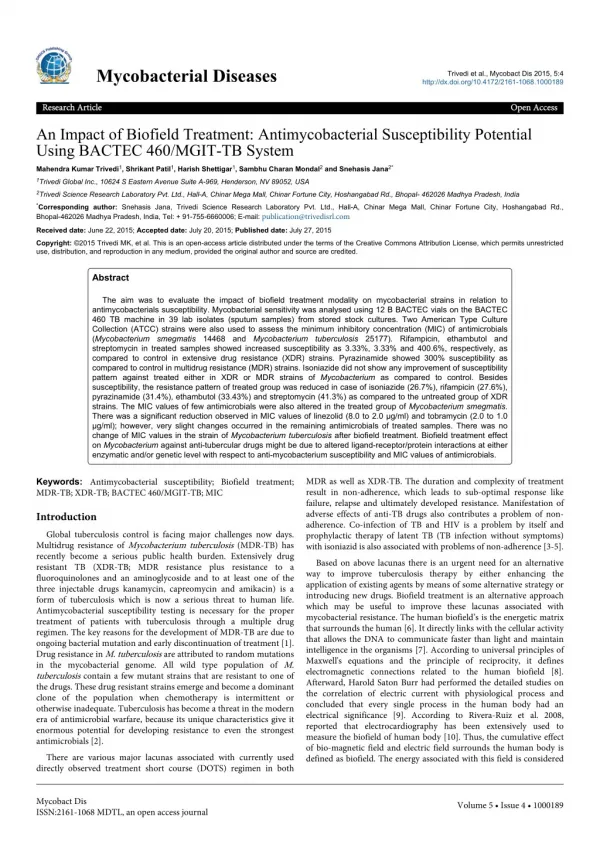Trivedi Effect - An Impact of Biofield Treatment: Antimycobacterial Susceptibility Potential Using BACTEC 460/MGIT-TB Sy
The aim was to evaluate the impact of biofield treatment modality on mycobacterial strains in relation to antimycobacterials susceptibility. Mycobacterial sensitivity was analysed using 12 B BACTEC vials on the BACTEC 460 TB machine in 39 lab isolates (sputum samples) from stored stock cultures. Two American Type Culture Collection (ATCC) strains were also used to assess the minimum inhibitory concentration (MIC) of antimicrobials (Mycobacterium smegmatis 14468 and Mycobacterium tuberculosis 25177). Rifampicin, ethambutol and streptomycin in treated samples showed increased susceptibility as 3.33%, 3.33% and 400.6%, respectively, as compared to control in extensive drug resistance (XDR) strains. Pyrazinamide showed 300% susceptibility as compared to control in multidrug resistance (MDR) strains. Isoniazide did not show any improvement of susceptibility pattern against treated either in XDR or MDR strains of Mycobacterium as compared to control. Besides susceptibility, the resistance pattern of treated group was reduced in case of isoniazide (26.7%), rifampicin (27.6%), pyrazinamide (31.4%), ethambutol (33.43%) and streptomycin (41.3%) as compared to the untreated group of XDR strains. The MIC values of few antimicrobials were also altered in the treated group of Mycobacterium smegmatis. There was a significant reduction observed in MIC values of linezolid (8.0 to 2.0 ?g/ml) and tobramycin (2.0 to 1.0 ?g/ml); however, very slight changes occurred in the remaining antimicrobials of treated samples. There was no change of MIC values in the strain of Mycobacterium tuberculosis after biofield treatment. Biofield treatment effect on Mycobacterium against anti-tubercular drugs might be due to altered ligand-receptor/protein interactions at either enzymatic and/or genetic level with respect to anti-mycobacterium susceptibility and MIC values of antimicrobials. | Authors: Mahendra Trivedi, Dahryn Trivedi, Alice Branton, Gopal Nayak
★
★
★
★
★
79 views • 5 slides


